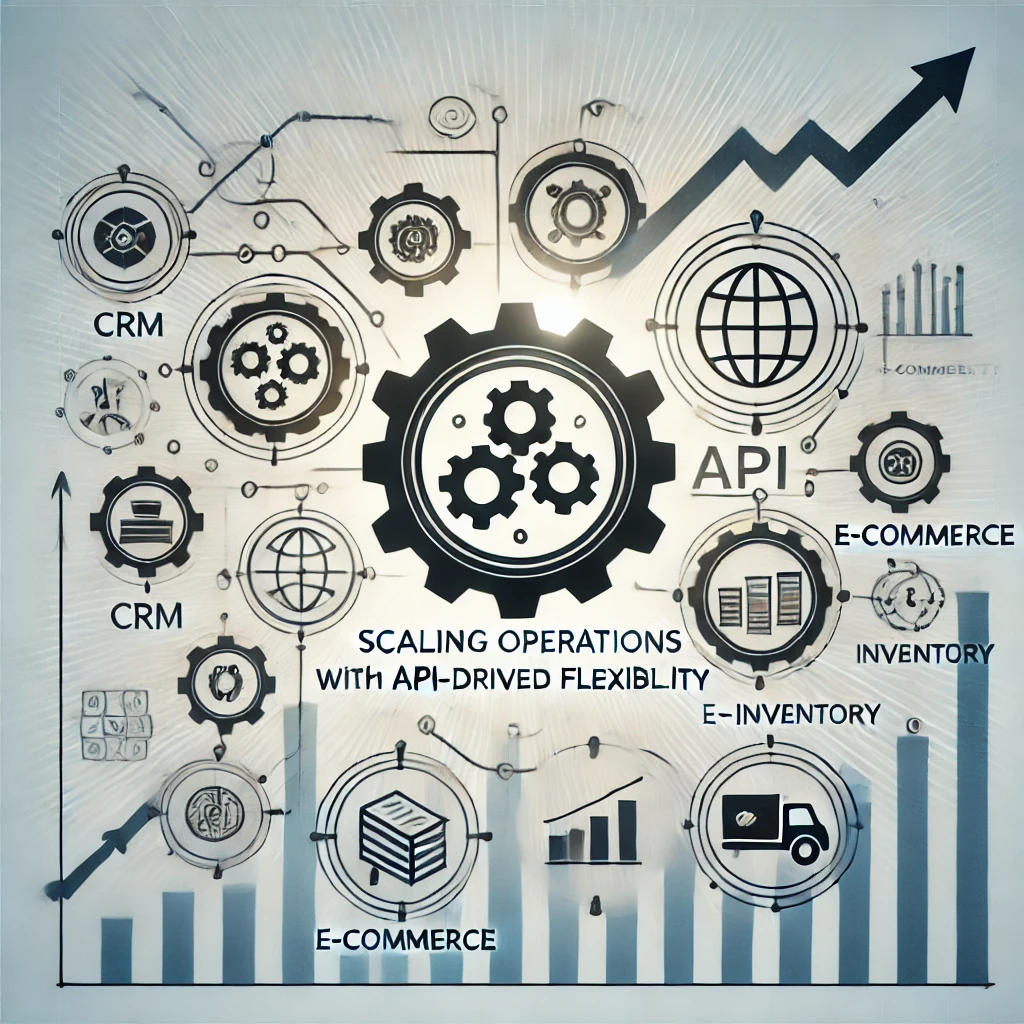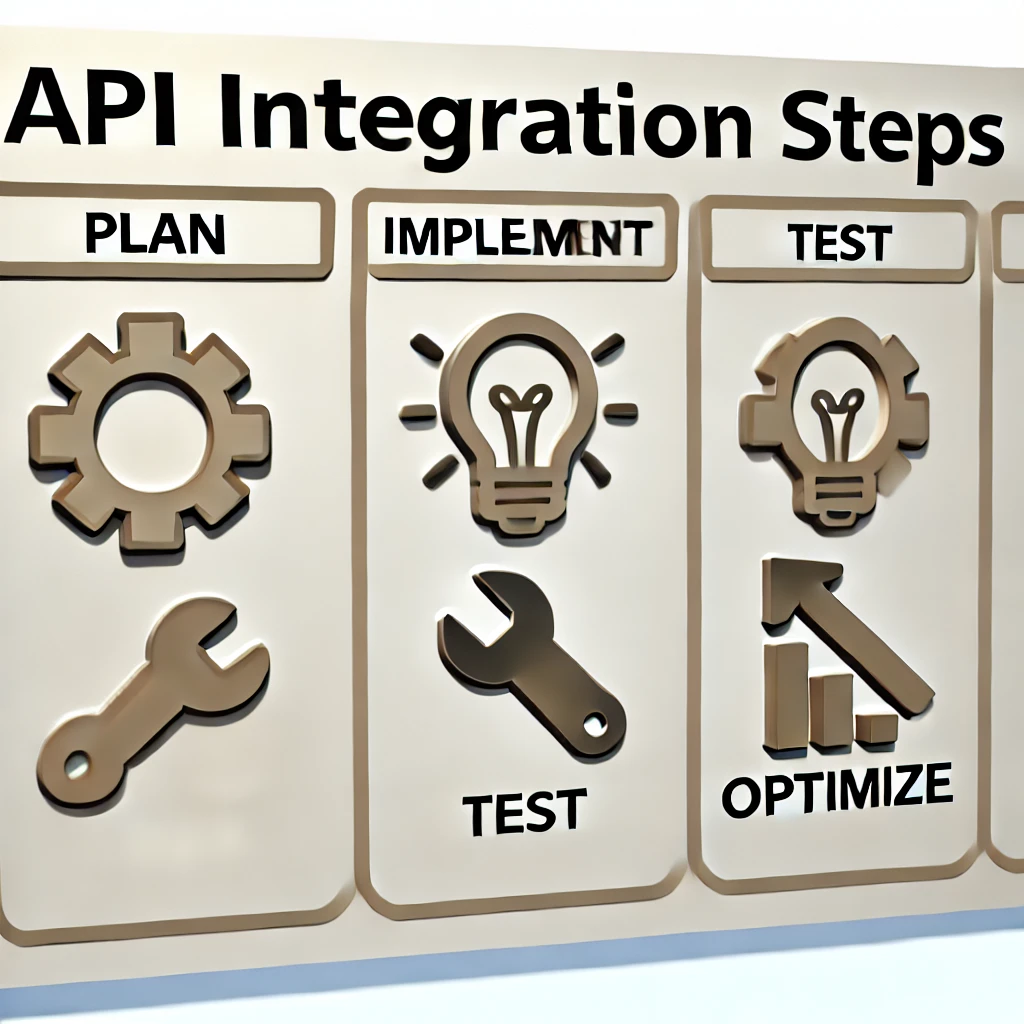Business growth with API automation is transforming how companies streamline operations, enhance customer experiences, and stay competitive. In 2024, mastering API automation isn’t just an option; it’s a pathway to achieving long-term growth and efficiency. By connecting various applications and automating workflows, businesses can minimize manual tasks, reduce costs, and make faster, data-driven decisions. Here’s a guide to understanding how API automation drives business growth, along with the top tips you need to stay ahead in today’s digital landscape.
Table of Contents
Understanding the Role of API Automation in Business Growth
APIs, or Application Programming Interfaces, play a critical role in enabling software systems to communicate with one another, allowing businesses to automate repetitive tasks, streamline workflows, and make data-driven decisions. API automation eliminates the need for manual data entry and repetitive processes, which can save both time and money, allowing your team to focus on high-impact tasks that directly contribute to business growth. Embracing this automation strategy is essential for companies aiming to enhance their operational capabilities and unlock growth potential.

Boosting Efficiency and Reducing Costs Through Automation
API automation is not just about efficiency; it’s about cutting down on unnecessary costs. By automating repetitive tasks, businesses can reduce human error and cut back on labor-intensive processes. Whether it’s automating customer data synchronization between platforms or managing routine IT tasks, using APIs for automation allows businesses to allocate resources more effectively, fostering sustainable growth. When integrated properly, API automation can make a noticeable difference in a company’s bottom line, paving the way for further investment in growth opportunities.

Enhancing Customer Experience with Real-Time Data
In a world where customers expect instant responses and seamless interactions, real-time data is invaluable. API automation enables real-time data exchange between systems, giving customer support teams access to up-to-the-minute information about client interactions, purchase history, and service issues. This allows businesses to offer personalized, timely support, which directly impacts customer satisfaction and loyalty. By using APIs to automate and manage customer interactions, companies can enhance the overall experience, driving business growth and building lasting relationships.

Strengthening Data Security and Compliance
With the increase in data breaches and the tightening of data privacy regulations, maintaining robust security measures is essential. API automation can bolster your data security strategy by enforcing standardized processes for data handling, storage, and access. Automated APIs ensure that sensitive information is consistently handled in compliance with industry regulations, reducing the risk of human error. Furthermore, by automating these processes, companies can more easily meet regulatory requirements, safeguarding both their reputation and their growth potential.

Scaling Operations with API-Driven Flexibility
API automation provides the flexibility needed to scale operations rapidly. For growing companies, it’s crucial to keep up with increasing data volumes and complex workflows without overwhelming their resources. APIs allow businesses to scale their operations without manual intervention, enabling them to handle a growing customer base, process higher transaction volumes, and support expanding service offerings seamlessly. With API automation, companies can stay agile and adapt quickly to new demands, fueling sustained business growth.

Leveraging Data Analytics for Strategic Decision-Making
One of the most valuable aspects of API automation is the ability to harness data analytics effectively. By automating the collection, analysis, and reporting of data from various sources, companies can make data-driven decisions with confidence. APIs enable the integration of data across platforms, providing leaders with a comprehensive view of their operations and customer behaviors. Leveraging API-driven data analytics, businesses can identify trends, optimize processes, and develop strategies that support long-term growth.

Improving Team Collaboration and Workflow Efficiency
API automation facilitates collaboration by enabling various departments to share data and insights effortlessly. Instead of siloed information, API integrations promote transparency and streamline workflows across teams. For instance, automating the flow of data from the sales platform to the CRM allows the marketing and customer service teams to have a unified view of client interactions. This cross-departmental transparency improves efficiency, encourages collaboration, and ultimately contributes to the company’s growth objectives.
Enhancing Product and Service Offerings with Integrative Capabilities
With API automation, businesses can expand their service offerings by integrating with third-party applications and platforms, adding more value to their products. For example, e-commerce platforms can integrate with popular payment gateways or shipping providers through API automation, providing customers with a seamless and enhanced shopping experience. These integrations make a business’s products and services more versatile, leading to increased customer satisfaction and opportunities for growth.
Practical Tips for Implementing API Automation in 2024
- Start with a Clear API Strategy: Define the specific goals you aim to achieve with API automation, such as improving customer support, streamlining sales, or enhancing data security.
- Prioritize Security: Work with IT and security teams to ensure that all APIs are secure, authenticated, and compliant with industry standards.
- Automate Gradually: Begin with simple tasks, like data synchronization or notifications, before advancing to complex workflows. This gradual approach reduces risk and helps your team adapt.
- Monitor Performance and Analytics: Track the performance of your automated APIs and adjust based on data insights to optimize functionality.
- Integrate Across Departments: Facilitate data flow between departments by connecting relevant platforms. This will enhance interdepartmental communication and help everyone work toward common growth goals.
- Document API Processes: Thorough documentation is essential for troubleshooting and scaling your automation efforts over time.
- Invest in Training: Ensure that your team understands the APIs they’re working with and is equipped to troubleshoot and manage automation issues.
- Collaborate with Experts: Partner with API specialists to streamline implementation and avoid common pitfalls.
- Use Analytics to Drive Future Automation: Let data guide your next steps by automating processes that deliver high returns and improve business growth with API automation.

Conclusion
API automation has become a key driver of business growth, offering unparalleled opportunities to streamline operations, enhance customer satisfaction, and scale more effectively. By leveraging the right API strategies and automation tools, businesses can stay ahead of the curve, meet customer demands with agility, and lay a strong foundation for growth. Embrace API automation in 2024, and let it be the catalyst that propels your business forward.
If you’re new to API automation and eager to learn how it can transform your business, don’t miss our blog post, Beginner’s API Guide: 8 Essential Tools Every Small Business Should Use for Seamless Integration. This guide breaks down the fundamentals, introducing you to tools that make API integration easy, even for small businesses with limited tech resources. Whether you’re looking to streamline operations, boost efficiency, or enhance customer experiences, this post covers the essentials you need to get started with confidence. Dive in and discover how the right tools can simplify integration and set your business on a path to growth!

